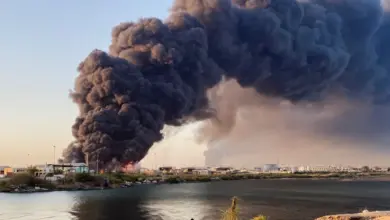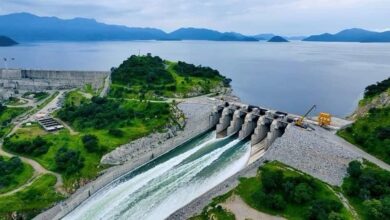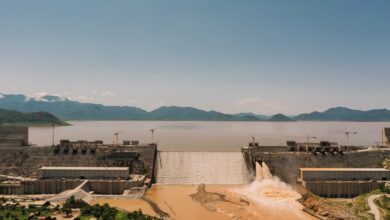Secret documents released last month by WikiLeaks from Stratfor, a private intelligence company that sells security information to clients, show that Egypt may have been talking to Sudan about military alternatives to protect its vital resource — the river Nile.
Both countries have denied the allegations, with Egypt calling it a rumor “designed to disturb Egyptian-Ethiopian relations.”
An internal email from 2010 procured by Stratfor and leaked by the whistle-blowing website WikiLeaks suggests that Egypt and Sudan may have agreed to build an Egyptian airbase in the Sudanese country’s western region of Darfur. The base was potentially to be used for assaults on Ethiopia and on the large dam it had been planning to build in the river if diplomatic efforts failed to resolve the dispute between the two nations over Nile water-sharing.
Ten countries are involved in a decades-long conflict over the rights to the billions of cubic meters of badly needed fresh water in the Nile. Control of the river has long been a national security priority for Egypt.
“The only matter that could take Egypt to war again is water,” said Egypt’s second President Anwar Sadat in 1979, making it clear that any limitations to this vital resource would be aggressively opposed.
Seven east African countries are demanding more water from the Nile, but Egypt and Sudan, who currently get 90 percent of the river’s water under colonial-era accords, strongly oppose the move.
Upstream countries including Uganda, Rwanda, Tanzania, Kenya and Ethiopia say the old accords are unfair and want a new deal, but very little has been agreed on during the past decade of talks.
The drawn-out tussle intensified after the 25 January revolution, when Ethiopia announced the size of its Grand Renaissance Dam to be much larger than expected. The proposal represented an attempt to muscle in on the river while Egypt was at its weakest politically, analysts said at the time.
With a capacity to create a reservoir of 65 billion cubic meters, Egypt became concerned that the Grand Ethiopian Renaissance Dam on the Nile would impact its vital flow of fresh water when completed. Egypt is entitled to 55 billion cubic meters of the Nile’s total annual flow of around 84 billion cubic meters.
Officials feared the dam would permanently choke off water downstream as Ethiopia filled a massive reservoir behind the dam, and sucked out the water for agriculture. The situation has been complicated by the sudden death of Meles Zenawi, Ethiopia’s former president and a major proponent of the dam, which has since slowed work on the project.
Ethiopia is also struggling to fund the dam, and would need foreign aid to complete the project. Egypt and Sudan could have the power to lobby foreign donors to cut off access to funding for the project if it is found to potentially hurt the flow of water downstream.
Meanwhile, it appears that Egypt may be quietly working on a diplomatic solution. After taking office, President Mohamed Morsy made Ethiopia the site of one of his first presidential visits as a sign of good will — former President Hosni Mubarak had never returned to Ethiopia after an assassination attempt there in 1995. Egypt also appointed former Water Minister Hesham Qandil, who was involved in water negotiations in the past, as prime minister. Both gestures indicate that the country may be striving to keep its end of the Nile basin bargain.
However, experts say that none of these gestures deals with the bigger problem at stake: the impasse between upstream countries who are demanding a more equitable agreement, and the vehement lobby against this by Egypt, and to a lesser extent Sudan. Rather than renegotiate rights, they say, Egypt has only proposed increasing the flow of the river in general by finding ways to reduce evaporation and leakage from the river throughout its course.
A version of this story appeared first on the blog Rebel Economy www.rebeleconomy.com



